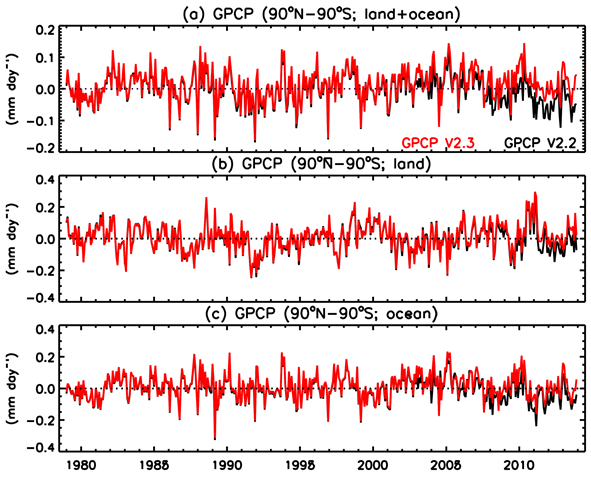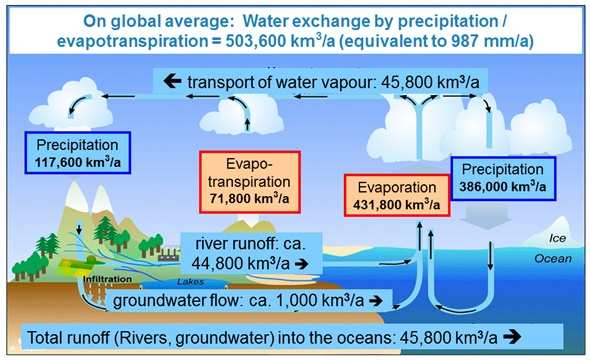Need Help?
4 August 2022
Atmosphere | Development History and Highlights
Atmosphere (IF 3.110, ISSN: 2073-4433) is an online open access journal that was first published in 2010. Atmosphere has published more than 6000 papers since its inception, and the journal has been indexed by SCIE since 2013 whilst also being indexed by Ei Compendex, Scopus (2021 CiteScore: 3.7), and other relevant databases. Atmosphere adheres to rigorous peer review and editorial processes and publishes only high-quality manuscripts that address important issues related to the atmosphere. Manuscripts are peer reviewed, and a first decision is provided to authors approximately 15.8 days after submission; acceptance to publication is undertaken in 2.7 days (median values for papers published in this journal in the first half of 2022). Atmosphere is pleased to be formally affiliated with the Working Group of Air Quality in European Citizen Science Association (ECSA) and the Italian Aerosol Society (IAS), and their members receive a discount on the article processing charge.
Editor-in-Chief

Name: Prof. Dr. Ilias Kavouras
Interests: Environmental, Occupational, and Geospatial Health
Affiliation: Sciences, CUNY Graduate School of Public Health and Health Policy, USA
Prof. Dr. Ilias Kavouras is a professor of Environmental Health Sciences at CUNY Graduate School of Public Health and Health Policy in New York City. He is trained as a chemist and an environmental health scientist. His research integrates natural and health sciences in understanding atmospheric dynamics, from the release of contaminants, their fate in the atmosphere and the role of physical and chemical processes to exposure pathways, and their relationship with biological mechanisms of toxicity and clinical outcomes. He is particularly interested in the interplay of climate change with atmospheric physical and chemical processes and the resultant environmental and health impacts.
Prof. Dr. Kavouras has been affiliated with research and academic institutes in the US and abroad, working on the aforementioned big-picture topics to address local and regional priorities while considering their diverse and unique characteristics. His experimental study designs include benchtop laboratory analysis and in vitro toxicology, method development, field studies, community-based exposure and health studies, and integrated geospatial, inverse, and epidemiological modeling.
Associate Editor

Name: Prof. Dr. Xuejun Liu
Affiliation: Department of Environmental Science and Engineering, College of Resources and Environmental Sciences, China Agricultural University (CAU), China
Prof. Dr. Xuejun Liu is a professor and a doctoral supervisor at the School of Resources and Environment, China Agricultural University, a member of the Nutrient Cycle and Environment Professional Committee of the Chinese Society of Plant Nutrition and Fertilizers, a member of the Nitrogen Working Committee of the Chinese Soil Society, a member of the Agricultural Resources Utilization Professional Committee of the Chinese Society of Natural Resources, and a member of the Ministry of Environmental Protection. He is a member of the overall expert group of the public relations project on the causes of heavy pollution and control, the chief expert of the research office of the National Air Pollution Prevention and Control Public Relations Center, and serves as a judge or an Editorial Board Member for numerous academic journals such as EST, AE, and Ecology Journal. He has long been engaged in the research of nitrogen cycle in farmland, environmental nutrients, and quantification of soil acidification that has led to the formation of distinctive features in atmospheric nitrogen deposition and nitrogen environmental effects. He has published more than 300 scientific research papers, 180 SCI papers in international journals, 1 English monograph, and participated in the publication of 14 monographs. In 2006, he was selected into the New Century Excellent Talents Support Program of the Ministry of Education. In 2012, he won the Outstanding Mentor Award of the Chinese Academy of Sciences. In 2013, he became the chief scientist of the national 973 Project. In 2014, he was funded by the National Outstanding Youth Fund Talent Plan; in 2016, he was selected as a young and middle-aged scientific and technological innovation leader in the national “10,000-person plan”; in 2017, he was selected as the “Scientific Chinese” (2016) Person of the Year; and in 2021, he was recognized as an “Elsevier 2020 China Highly Cited Scholar” and included in the “2020 Top 2% of the World’s Top Scientists” list.
Section Editor-in-Chief

Name: Dr. Daniele Contini
Affiliation: Institute of Atmospheric Sciences and Climate, National Research Council, Str. Prv. Lecce-Monteroni km 1.2, 73100 Lecce, Italy
Dr. Daniele Contini is a Research Director at ISAC-CNR. His main research interests are focused on four main lines: (i) identification and characterization of atmospheric particulate matter sources using both high-resolution temporal measurements and receptor models based on the chemical composition of the particulate; (ii) health and toxicological effects of atmospheric particulate matter due to both natural and anthropogenic sources; (iii) study of atmospheric particulate dynamics in the surface boundary layer with particular attention to emission and deposition processes; (iv) analysis and parameterization of the dispersion of atmospheric pollutants also using physical modeling on a reduced scale in a wind tunnel and/or in a hydraulic vein.
Throughout his career, he has established numerous and successful research collaborations with leading international groups in the field of atmospheric and climate sciences. He has managed a number of important projects for public administrations and private companies. Dr. Daniele Contini has served as President of the Italian Aerosol Society (IAS) since 2018 and is co-chair of the working group “Atmospheric Aerosol Studies” of the European Aerosol Assembly. He manages the Environmental-Climate Observatory of Lecce, regional station of the GAW/WMO-Global Atmosphere Watch network and station of the ACTRIS network.
Highly Cited Article Recommendations:
“The Global Precipitation Climatology Project (GPCP) Monthly Analysis (New Version 2.3) and a Review of 2017 Global Precipitation”
Atmosphere 2018, 9(4), 138; https://doi.org/10.3390/atmos9040138
Available online: https://www.mdpi.com/2073-4433/9/4/138

The new Version 2.3 of the Global Precipitation Climatology Project (GPCP) Monthly analysis is described in terms of changes made to improve the homogeneity of the product, especially after 2002. These changes include corrections to cross-calibration of satellite data inputs and updates to the gauge analysis. Over-ocean changes starting in 2003 resulted in an overall precipitation increase of 1.8% after 2009. Updating the gauge analysis to its final, high-quality version increases the global land total by 1.8% for the post-2002 period. These changes correct a small, incorrect dip in the estimated global precipitation over the last decade given by the earlier Version 2.2. The GPCP analysis is also used to describe global precipitation in 2017. The general La Niña pattern for 2017 is noted, and the evolution from the early 2016 El Niño pattern is described. The 2017 global value is one of the highest for the 1979–2017 period, exceeded only by 2016 and 1998 (both El Niño years), and reinforces the small positive trend. Results for 2017 also reinforce significant trends in precipitation intensity (on a monthly scale) in the tropics. These results for 2017 indicate the value of the GPCP analysis, in addition to research, for climate monitoring.
“Evaluating the Hydrological Cycle over Land Using the Newly- Corrected Precipitation Climatology from the Global Precipitation Climatology Centre (GPCC)”
Atmosphere 2017, 8(3), 52; https://doi.org/10.3390/atmos8030052
Available online: https://www.mdpi.com/2073-4433/8/3/52
The 2015 release of the precipitation climatology from the Global Precipitation Climatology Centre (GPCC) for 1951–2000, based on climatological normals of about 75,100 rain gauges, allows for quantification of mean land surface precipitation as part of the global water cycle. In GPCC’s 2011- release, a bulk climatological correction was applied to compensate for gauge undercatch. In this paper, we derive an improved correction approach based on the synoptic weather reports for the period 1982–2015. The compared results show that the climatological approach tends to overestimate the correction for Central and Eastern Europe, especially in the northern winter, and in other regions throughout the year. Applying the mean weather-dependent correction to the GPCC’s uncorrected precipitation climatology for 1951–2000 gives a value of 854.7 mm of precipitation per year (excluding Antarctica) or 790 mm for the global land surface. The warming of nearly 1 K relative to pre-industrial temperatures is expected to be accompanied by a 2%–3% increase in global (land and ocean) precipitation. However, a comparison of climatology for 30-year reference periods from 1931–1960 up to 1981–2010 reveals no significant trend for land surface precipitation. This may be caused by the large variability of precipitation, the varying data coverage over time, and other issues related to the sampling of rain-gauge networks. The GPCC continues to enlarge and further improve the quality of its database and will generate precipitation analyses with homogeneous data coverage over time. Another way to reduce the sampling issues is through the combination of rain gauge-based analyses with remote sensing (i.e., satellite or radar) datasets.

Special Issue Recommendations:
“Artificial Intelligence for Meteorology Applications”
Edited by Dr. Wei Fang, Prof. Dr. Victor S. Sheng and Dr. Qiguang Wang
Submission Deadline: 15 September 2022
https://www.mdpi.com/journal/atmosphere/special_issues/AI_Meteorology
“Materials, Technologies, and Methods for the Building Indoor Comfort”
Edited by Dr. Manuela Neri
Submission Deadline: 26 October 2022
https://www.mdpi.com/journal/atmosphere/special_issues/building_indoor_comfort
“Between Meso-Scale and Local Scale: Downscaling Weather Forecast and Upscaling Atmospheric Dispersion”
Edited by Dr. Patrick Armand
Submission Deadline: 17 November 2022
https://www.mdpi.com/journal/atmosphere/special_issues/downscaling_weather

